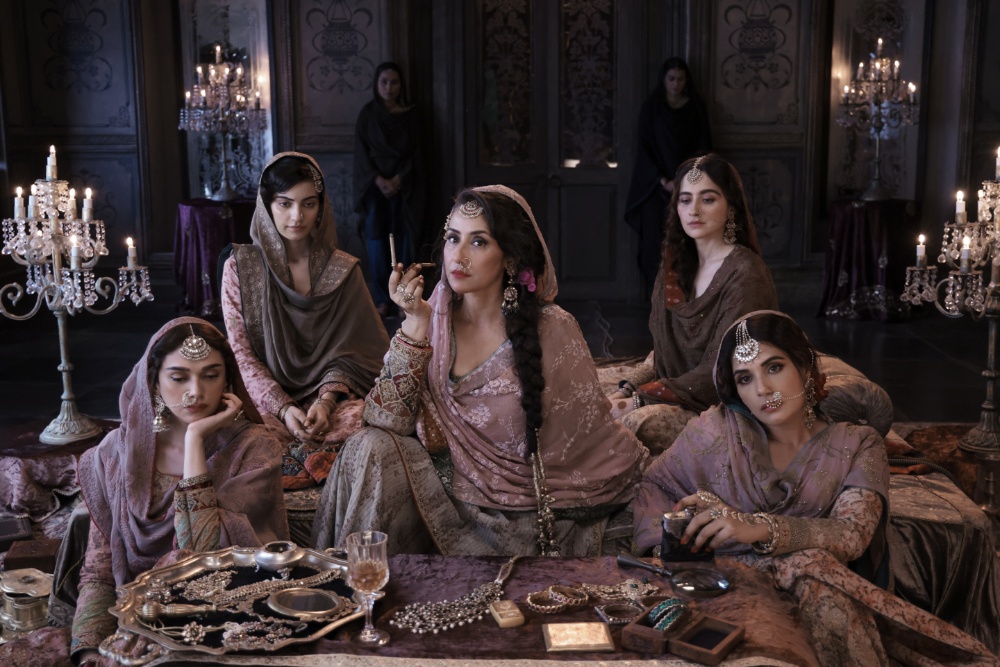
‘HEERAMANDI: THE DIAMOND BAZAAR': INSIDE NETFLIX'S BIG-BUDGET GAMBIT TO WOO INDIAN AUDIENCES
Back in 2019, on a visit to Los Angeles, celebrated Indian director Sanjay Leela Bhansali stopped in at the offices of Netflix. In his informal five-minute meeting with CEO Ted Sarandos, Bhansali pitched an idea - it would be an opulent tale of warring courtesans set amid India's struggle for independence. Sarandos greenlit the project on the spot.
Now Bhansali's Hindi-language series, "Heeramandi: The Diamond Bazaar," is making its U.S. debut (episodes dropped on May 1). Spanning 1920 through 1947, the lavish story is set in the Heeramandi district of Lahore, British India, the milieu of the tawaifs. As with the geisha of Japan, tawaifs were trained in music and dance and courted by nobility. At the show's center are Mallikajaan (Manisha Koirala), the scheming queen of Heeramandi, and her vindictive niece Fareedan (Sonakshi Sinha), who has ambitions to take her aunt's place.
The project's development took somewhat longer than that Netflix visit. Back in 2003, it was former film journalist Moin Beg who brought the concept to the director. Bhansali was hooked, imagining "a vast film with a lot of detailing."
At the time, Bhansali - known for his operatic filmmaking style - was coming off "Devdas," a period romance based on an Indian literary classic, which premiered at Cannes in 2002 and earned a BAFTA nomination. Some 16 years passed, during which his directorial vision grew grander, encompassing
historical epics "Bajirao Mastaani" (2015) and "Padmaavat" (2018).
But Bhansali found himself periodically returning to "Heeramandi."
"I always like to keep a story in my mind for at least eight to 10 years before I start making it," he says, "because then I feel completely familiar with it."
By 2019, Bhansali knew the expansive subject couldn't be contained in a feature film. He'd seen what Netflix could do with a sprawling narrative like "The Crown," says Monika Shergill, VP of content for Netflix India, and he "felt that there could be a possibility of telling this story in a longer format."
Netflix and Bhansali announced "Heeramandi" in 2021. "We worked for over 350 days. We shot over three years, and over 18 years actually of living the dream," Bhansali says. While a number was not disclosed, "Heeramandi" is certainly the streamer's biggest-budget Indian original to date. "The scale was big - these are the biggest sets I've made in my life," Bhansali says.
"Heeramandi" has all the elements that Indian audiences adore - song and dance sequences, melodrama, intrigue, patriotism, a big-name cast and breathtaking visuals. Yet Bhansali's main challenge was to tell a story that would appeal to a country where 65% of the population of 1.4 billion is younger than 35, and largely unaware of the forgotten world of courtesans. So he kept the cinematography and edit patterns modern, and the dialogue "saucy" and laced with one-liners.
But Bhansali was unsparing in the details - even if "Heeramandi" would be watched on one of India's 575 million smartphones. The textiles and designs of the period were painstakingly re-created, and 80% of the jewelry that adorns the tawaifs was real, necessitating the presence of security on set. For the cast, there was Urdu-language diction and body-language training.
"It is definitely not easy when you're working with a perfectionist, and also you yourself were trying to achieve that perfection. I didn't want mediocre work. If I'm getting a platform, where I have a director like Sanjay Leela Bhansali and Netflix and a series on this grand scale, I didn't want it easy," said actor Manisha Koirala, who previously worked with Bhansali on "Khamoshi" in 1996.
India's streaming market is fiercely competitive. With subscription rates starting at $1.75 a month, Netflix is looking to significantly increase its foothold in the country, where it has about 12 million subscribers, per industry estimates. "Heeramandi" is its latest gambit to attract users, not just in India but globally. The show is subtitled in 35 languages and dubbed in 14.
Asked if the show is likely to be India's "Squid Game"-like breakout, "It does have both authenticity and a certain exotic element," Shergill says. "It is really exceptional and beautiful. So I'm hoping the story resonates [and] the craft of filmmaking comes together for people."
For Bhansali and Beg, who visited Lahore (in present-day Pakistan) and met the descendants of the courtesans, the series is the culmination of their dream.
"All of those tawaifs who are existing now are blessing us that finally, we're going to put them on the screen," Bhansali says. "And it was always on my list of things to make. So finally, I'm happy that I've made it."